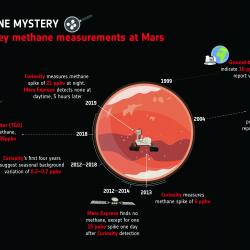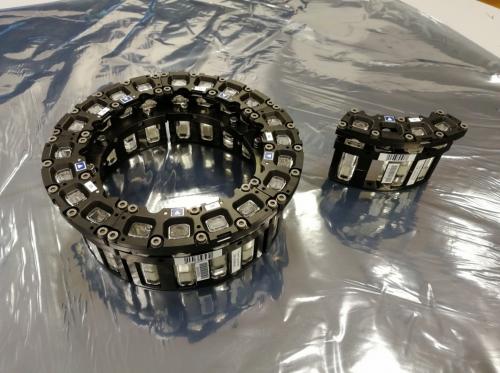Enough boiling in space, time to shake things up and start making foam. The end of a mission marks the beginning of a new one for the Belgian space operations center (B.USOC).
On March 6, American astronaut Jessica Meir will be replacing experiments within the Fluid Science Laboratory (FSL) rack in the European module on-board the International Space Station (ISS). FSL is designed to host experiments for the study of the dynamics of fluids and soft matters in space, and is under the control of the Belgian space operations center in Uccle (Brussels): the B.USOC (Belgian User Support and Operations Center). B.USOC operators have been boiling liquids for the past six months in order to expand our knowledge of the boiling process, and will now study the evolution of foam in microgravity.
The complex crew activity to swap the two experiments will take about 4 hours and will be live-streamed and commented on the B.USOC YouTube channel. You can also follow B.USOC on Twitter.
Since 2016, B.USOC has been conducting multiple fluid physics experiments one after the other, to maximize the utilization of the FSL rack:
- Geoflow 2C: Simulation of Geophysical Fluid Flow under Microgravity (in support of the Spanish control centre, E.USOC, in Madrid)
- CompGran studied the dynamics of granular material
- RUBI studied the boiling process
- FOAM-C will study the aging of wet foam
Background information on B.USOC, RUBI and FOAM-C
B.USOC
The Belgian User Support and Operations Centre (B.USOC) is responsible for the implementation of European payloads on board the International Space Station, on behalf of the European Space Agency (ESA). It acts as the link between scientists and the ISS environment, and is responsible for preparing and operating those experiments. B.USOC operators are in contact with other ground control stations across Europe in order to make sure that these experiments are executed as expected, and according to the needs of the scientists. Experiments start with a commissioning phase that requires a 24/7 based console coverage to perform a functional checkout. Later throughout the mission, this can be reduced.
B.USOC has been responsible for quite an extensive list of payloads since the launch of the Columbus module in 2008: the external platforms SOLAR and ASIM, the PCDF experiment, the METERON robotics project and the Fluid Science Laboratory that can host a multitude of experiments. The most recent experiment is RUBI (Reference mUlticale Boiling Investigation), soon to be replaced by FAOM-C (Foam Coarsening).
RUBI
The main goal of the RUBI experiment was to expand our knowledge about the boiling process within a fluid. In your everyday kitchen on Earth, gravity plays an important role in this process through buoyancy of the created bubbles. This is why the ISS microgravity environment is ideal to study the fundamental physics, which would otherwise be hidden by gravity effects. RUBI’s main component is the fluid cell that is surrounded by heaters to reach near-boiling temperatures. Instruments to accurately control and monitor the boiling process include the Substrate Heater with a nucleation site where the boiling is initiated by a laser, a high speed Black&White camera and a high speed infrared camera to capture images of the generated bubbles. An electrode within the fluid cell gives the scientists the possibility to observe the effects of an electric field on the bubbles, a pump can produce a flow to study how bubbles can be carried away by it, and accurate temperature sensors are able to pass through the bubbles like a needle.
With RUBI, about 1700 scientific runs were performed, producing more than 4.7 TB of data that is being analyzed by scientists. Besides telemetered values from each science run, the largest share of this data is coming from the High Speed Black&White and infrared cameras to monitor the boiling process. Having real-time access to the downlinked (sent from space to Earth) images to assess the progress and success of each run is producing the most delightful images of bubbles in microgravity, providing that extra touch of joy for the operator on console. In order for the scientists to cope with that amount of data, automation was key to extract valuable data and process it.
FOAM-C
Beginning of March 2020, the next FSL experiment, FOAM-C will take place, starting with a commissioning phase, during which the operator is on console 24/7 to extensively test every sub-system of the experiment, before proceeding with the science runs.
FOAM-C will study the evolution of so-called “wet” foams, which cannot be studied on the ground. On Earth, under influence of gravity, the liquid content of foam quickly drains to the bottom, leaving behind a “dry” foam. Due to this, the physics of “wet” foams is poorly known. The micro-gravity environment on the International Space Station allows to study these “wet” foams without the masking effect of gravity. FOAM-C consists of 23 sample cells containing different liquid compositions and liquid fractions. Within each of these sample cells, foam will be generated using a magnetic piston, and the evolution of the resulting foam will be observed for up to 24h. This will be repeated several times per sample cell. A Black&White overview camera and several sensors collecting the laser light that was scattered throughout the foam, will be used to obtain information about the bubble size and dynamics.
Belgian contribution
Belgian contribution goes beyond the space operations:
- FOAM-C:
- University of Liège is part of the research team (Group for Research and Applications in Statistical Physics, GRASP, ULg, N. Vandewalle, H. Caps)
- Lambda-X, in Nivelles, took part of the optics development.
- RUBI:
- Université Libre de Bruxelles is part of the research team (ULB - Transfers Interfaces and Processes, Prof. P. Colinet).
- FSL:
- Space Applications Services, in Zaventem, developed the new Video Management Unit of FSL
Contact
- B.USOC team: b (dot) usoc (at) busoc (dot) be, +32-2-3730441



